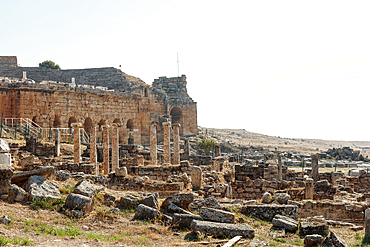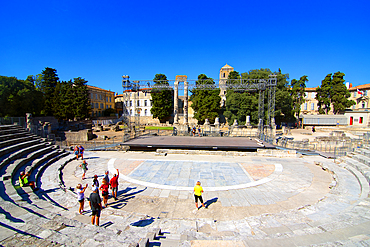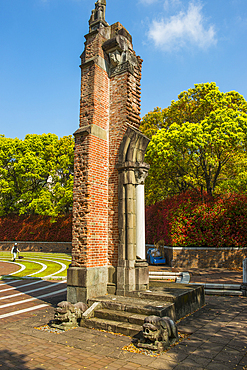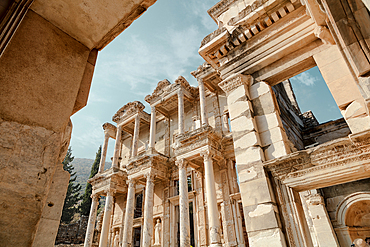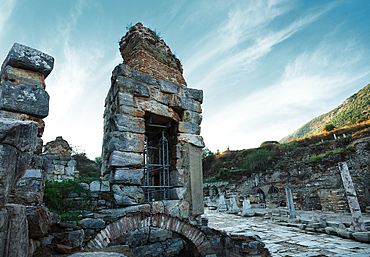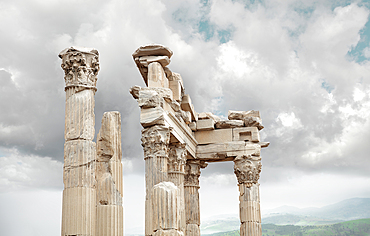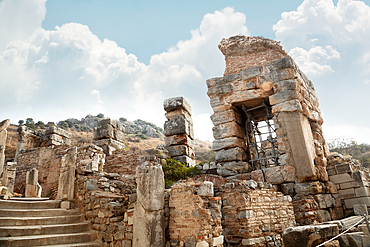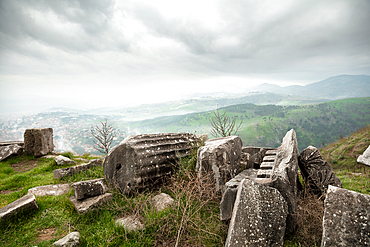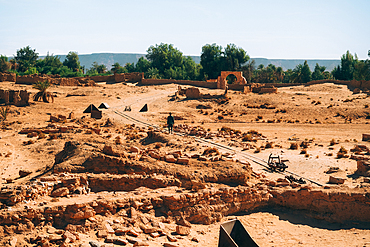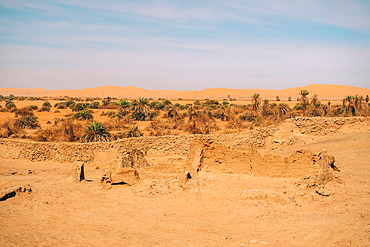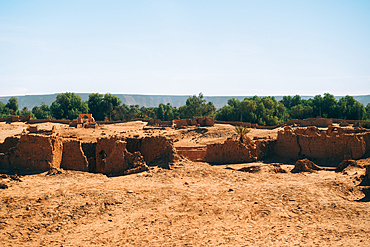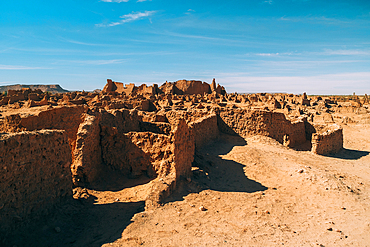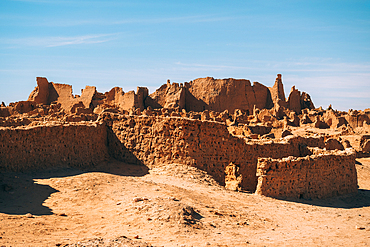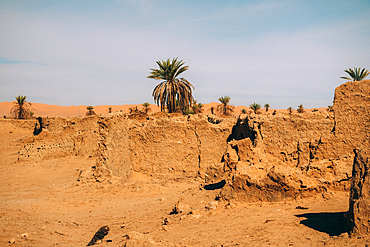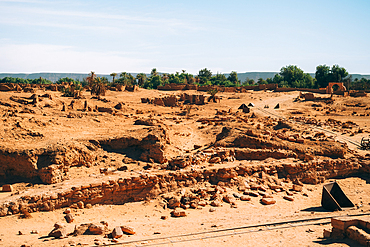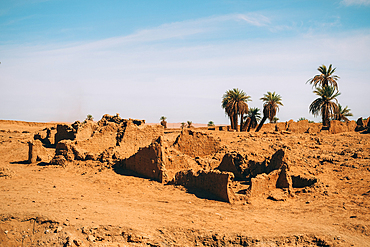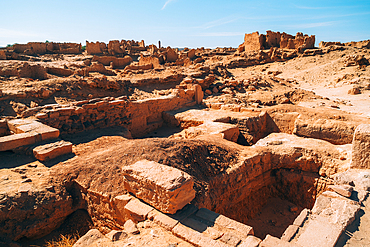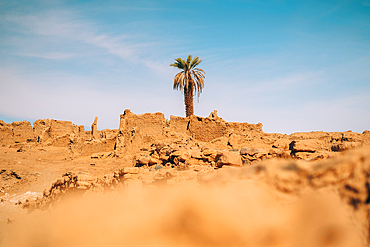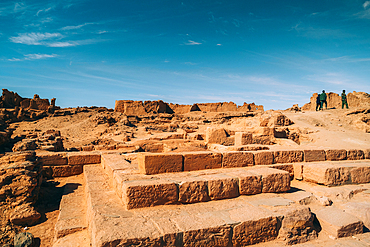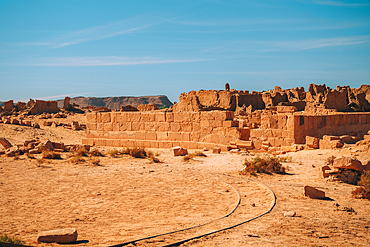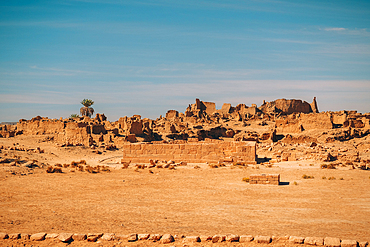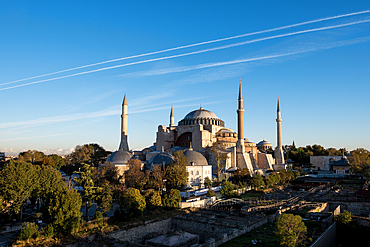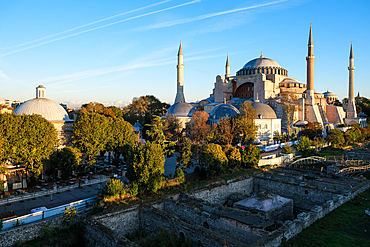Recent searches
Loading...
1384-774 - Ruins of pre-Spanish Mahos village, Poblado de la Atalayita, Pozo Negro, Fuerteventura, Canary Islands, Spain
1384-773 - Ruins of pre-Spanish Mahos village, Poblado de la Atalayita, Pozo Negro, Fuerteventura, Canary Islands, Spain
1384-772 - Ruins of pre-Spanish Mahos village, Poblado de la Atalayita, Pozo Negro, Fuerteventura, Canary Islands, Spain
1160-5382 - View from Eisenberg Castle ruin to Tannheim Mountains, Pfronten, Allgau, Swabia, Bavaria, Germany
1160-5381 - Eisenberg Castle ruin near Pfronten, Allgau, Swabia, Bavaria, Germany
1384-573 - UNESCO World Heritage Site, the ancient city of Polonnaruwa, Sri Lanka, Asia - ruins at Potgul Vihara site
1382-231 - battery and ruins of the fort of Portobello,Colon Province,Republic of Panama,Central America
1382-220 - ruins of the archaelogical site of Panama Viejo,Panama City,Republic of Panama,Central America
722-195 - Konark, Puri District, Odisha, India, a stone statue of a mythical creature among the ruins in the grounds of the massive 30-metre high, mid-13th century Sun Temple dedicated to the Hindu Sun God, Surya. The Temple is constructed as a twelve-wheeled chari
722-194 - Konark, Puri District, Odisha, India, stone statues of elephants among the ruins in the grounds of the massive 30-metre high, mid-13th century Sun Temple dedicated to the Hindu Sun God, Surya. The Temple is constructed as a twelve-wheeled chariot drawn by
722-193 - Konark, Puri District, Odisha, India, a stone statue of a mythical creature among the ruins in the grounds of the massive 30-metre high, mid-13th century Sun Temple dedicated to the Hindu Sun God, Surya. The Temple is constructed as a twelve-wheeled chari
722-189 - Konark, Puri District, Odisha, India, pilgrims among the ruins in the grounds of the massive 30-metre high, mid-13th century Sun Temple dedicated to the Hindu Sun God, Surya is constructed as a twelve-wheeled chariot drawn by seven horses all carved in st
1384-251 - Black Spiny-tailed Iguana 'Ctenosaura similis', Chichen Itzá, Mayan ruins, Yucatan, Mexico
1384-250 - Surveyor at work, Temple of Panels, Templo de los Tableros Esculpidos, Chichen Itzá, Mayan ruins, Yucatan, Mexico
1384-249 - Archaeologists at work Chichen Itzá, Mayan ruins, Yucatan, Mexico
1384-248 - Stone columns Temple of the Warriors, Templo de los Guerreros, Chichen Itzá, Mayan ruins, Yucatan, Mexico
1384-247 - Walls of the ball court with stone hoop, Juego de Pelota, Chichen Itzá, Mayan ruins, Yucatan, Mexico
1384-246 - Mayan ruins at Ek Balam archaelogical site, near Vallodoid, Temozón, Yucatán, Mexico
1384-245 - Mayan ruins at Ek Balam archaelogical site, near Vallodoid, Temozón, Yucatán, Mexico
1384-243 - Archaeologists at work Chichen Itzá, Mayan ruins, Yucatan, Mexico
1384-242 - Sacred Cenote, Chichen Itzá, Mayan ruins, Yucatan, Mexico
1384-241 - Platform of Venus, Chichen Itzá, Mayan ruins, Yucatan, Mexico
1384-240 - Casa Colorado, Chichen Itzá, Mayan ruins, Yucatan, Mexico
1384-238 - Observatory building, El Caracol, Chichen Itzá, Mayan ruins, Yucatan, Mexico
1384-239 - Archaeologists at work Chichen Itzá, Mayan ruins, Yucatan, Mexico
1384-237 - Temple of Panels, Templo de los Tableros Esculpidos, Chichen Itzá, Mayan ruins, Yucatan, Mexico
1384-236 - Carved stonework details, Temple of Panels, Templo de los Tableros Esculpidos, Chichen Itzá, Mayan ruins, Yucatan, Mexico
1384-235 - Elaborate decorated stone facade in Monjas complex, Chichen Itzá, Mayan ruins, Yucatan, Mexico - The Nunnery or Nun's House
1384-234 - Elaborate decorated stone facade in Monjas complex, Chichen Itzá, Mayan ruins, Yucatan, Mexico - Iglesia or church building
1384-233 - Workers maintaining stonework at The Nunnery, Edificio de las Monjas, Chichen Itzá, Mayan ruins, Yucatan, Mexico
1384-232 - The Nunnery, Edificio de las Monjas, Chichen Itzá, Mayan ruins, Yucatan, Mexico
1384-231 - Observatory building, El Caracol, Chichen Itzá, Mayan ruins, Yucatan, Mexico
1384-230 - Archaeologists at work Chichen Itzá, Mayan ruins, Yucatan, Mexico
1384-228 - Carved stonework figure, Chichen Itzá, Mayan ruins, Yucatan, Mexico possibly an erotic image? One of the smaller buildings
1384-229 - The Ossuary building, Tomb of the Great Priest, Chichen Itzá, Mayan ruins, Yucatan, Mexico
1384-227 - Souvenir wooden carved face masks on sale, Chichen Itzá, Mayan ruins, Yucatan, Mexico
1384-226 - Temple of the Warriors, Templo de los Guerreros, Chichen Itzá, Mayan ruins, Yucatan, Mexico
1384-225 - Temple of the Warriors, Templo de los Guerreros, Chichen Itzá, Mayan ruins, Yucatan, Mexico
1384-224 - Workers maintaining stonework Eagles and Jaguars platform, Chichen Itzá, Mayan ruins, Yucatan, Mexico
1384-222 - Map of archaeological site, Chichen Itzá, Mayan ruins, Yucatan, Mexico
1384-223 - Temple of the Jaguars, Templo de los Jaguares, Chichen Itzá, Mayan ruins, Yucatan, Mexico
1384-221 - Carved stonework jaguar head with walls of the ball court, Juego de Pelota, Chichen Itzá, Mayan ruins, Yucatan, Mexico
1384-220 - Walls of the ball court, Juego de Pelota, Chichen Itzá, Mayan ruins, Yucatan, Mexico
1384-219 - Temple of the Jaguars, Templo de los Jaguares, Chichen Itzá, Mayan ruins, Yucatan, Mexico
1384-218 - Line of people waiting to enter, at Chichen Itzá, Mayan ruins, Yucatan, Mexico
795-722 - Scenic ruins of the Minoan Palace of Knossos. Knossos palace, crete island, greece
1384-22 - Temple Of Kukulkan El Castillo pyramid, Chichen Itzá Mayan ruins, Yucatan, Mexico
1384-15 - People climbing El Torre, The Tower, Ek Balam Mayan ruins, near Vallodoid, Temozón, Yucatán, Mexico
1384-14 - The Ossuary building, Tomb of the Great Priest, Chichen Itzá, Mayan ruins, Yucatan, Mexico
1384-13 - Elaborate decorated stone facade in Monjas complex, Chichen Itzá, Mayan ruins, Yucatan, Mexico - The Nunnery or Nun's House
1384-12 - The Ossuary building, Tomb of the Great Priest, Chichen Itzá, Mayan ruins, Yucatan, Mexico
1384-11 - Temple of the Warriors, Templo de los Guerreros, Chichen Itzá, Mayan ruins, Yucatan, Mexico
1384-10 - Temple Of Kukulkan El Castillo pyramid, Chichen Itzá Mayan ruins, Yucatan, Mexico
1384-9 - Temple Of Kukulkan El Castillo pyramid, Chichen Itzá Mayan ruins, Yucatan, Mexico
1382-75 - Sigulda Medieval Castle ruins,Sigulda,Vidzeme Region,Latvia,Baltic region,Northern Europe
1382-74 - Sigulda Medieval Castle ruins,Sigulda,Vidzeme Region,Latvia,Baltic region,Northern Europe
801-4009 - Ruins of Workmen's Village, Deir el-Medina, Ancient Thebes, UNESCO World Heritage Site, Luxor, Egypt
801-4010 - Ruins of Workmen's Village, Tombs Above, Deir el-Medina, Ancient Thebes, UNESCO World Heritage Site, Luxor, Egypt
801-4007 - Tomb Entrance (foreground), Ruins of Workmen's Village (background), Deir el-Medina, Ancient Thebes, UNESCO World Heritage Site, Luxor, Egypt
801-4006 - Ruins of Workmen's Village, Deir el-Medina, Ancient Thebes, UNESCO World Heritage Site, Luxor, Egypt
801-4005 - Ruins of Workmen's Village, Deir el-Medina, Ancient Thebes, UNESCO World Heritage Site, Luxor, Egypt
801-4004 - Ruins of Workmen's Village, Deir el-Medina, Ancient Thebes, UNESCO World Heritage Site, Luxor, Egypt
801-4003 - Ruins of Workmen's Village, Deir el-Medina, Ancient Thebes, UNESCO World Heritage Site, Luxor, Egypt
801-4002 - Ruins of Workmen's Village, Deir el-Medina, Ancient Thebes, UNESCO World Heritage Site, Luxor, Egypt
1378-40 - The ruins in Hierapolis. The amphitheatre. Pamukkale. Turkey
1231-38 - A group of tourists visit the Roman ruins in Arles - a city on the Rhône River in the Provence region of southern France.
1184-11721 - Church ruins, Nagasaki Peace Park, Nagasaki, Kyushu, Japan, Asia
1378-32 - View through the window to other ruins of the Library of Celsus in the ancient city of Ephesus, NESCO World Heritage Site, Anatolia, Asia Minor, Turkey, Eurasia
1378-30 - Necropolis in the ruins of the ancient city of Ephesus, UNESCO World Heritage Site, Anatolia, Turkey, Asia Minor, Eurasia
1378-28 - Ruins of the Library of Celsus in the ancient city of Ephesus, UNESCO World Heritage Site, Anatolia, Asia Minor, Turkey, Eurasia
1378-25 - Ancient columns on a cloudy background, ruins of Pergamon, UNESCO World Heritage Site, Bergama city, Izmir Province, Anatolia, Turkey, Asia Minor, Eurasia
1378-20 - The ruins in ancient Ephesus, UNESCO World Heritage Site, Selchuk, Anatolia, Turkey, Asia Minor, Eurasia
1378-4 - Ruins of the Library of Celsus in the ancient city of Ephesus, UNESCO Worlf Heritage Site, Anatolia, Asia Minor, Turkey, Eurasia
1378-2 - View with ruins of the ancient city of Pergamon, UNESCO World Heritage Site, Bergama city, Izmir Province, Anatolia, Turkey, Asia Minor, Eurasia
1351-274 - Ruins of the ancient village of Germa, capital of the Garamantes empire, in the Fezzan region, Libya, North Africa, Africa
1351-275 - Ruins of the ancient village of Germa, capital of the Garamantes empire, in the Fezzan region, Libya, North Africa, Africa
1351-273 - Ruins of the ancient village of Germa, capital of the Garamantes empire, in the Fezzan region, Libya, North Africa, Africa
1351-272 - Ruins of the ancient village of Germa, capital of the Garamantes empire, in the Fezzan region, Libya, North Africa, Africa
1351-271 - Ruins of the ancient village of Germa, capital of the Garamantes empire, in the Fezzan region, Libya, North Africa, Africa
1351-269 - Ruins of the ancient village of Germa, capital of the Garamantes empire, in the Fezzan region, Libya, North Africa, Africa
1351-270 - Ruins of the ancient village of Germa, capital of the Garamantes empire, in the Fezzan region, Libya, North Africa, Africa
1351-268 - Ruins of the ancient village of Germa, capital of the Garamantes empire, in the Fezzan region, Libya, North Africa, Africa
1351-267 - Ruins of the ancient village of Germa, capital of the Garamantes empire, in the Fezzan region, Libya, North Africa, Africa
1351-266 - Ruins of the ancient village of Germa, capital of the Garamantes empire, in the Fezzan region, Libya, North Africa, Africa
1351-265 - Ruins of the ancient village of Germa, capital of the Garamantes empire, in the Fezzan region, Libya, North Africa, Africa
1351-264 - Ruins of the ancient village of Germa, capital of the Garamantes empire, in the Fezzan region, Libya, North Africa, Africa
1351-263 - Ruins of the ancient village of Germa, capital of the Garamantes empire, in the Fezzan region, Libya, North Africa, Africa
1351-261 - Ruins of the ancient village of Germa, capital of the Garamantes empire, in the Fezzan region, Libya, North Africa, Africa
1351-262 - Ruins of the ancient village of Germa, capital of the Garamantes empire, in the Fezzan region, Libya, North Africa, Africa
1351-260 - Ruins of the ancient village of Germa, capital of the Garamantes empire, in the Fezzan region, Libya, North Africa, Africa
1351-259 - Ruins of the ancient village of Germa, capital of the Garamantes empire, in the Fezzan region, Libya, North Africa, Africa
1351-257 - Ruins of the ancient village of Germa, capital of the Garamantes empire, in the Fezzan region, Libya, North Africa, Africa
1351-258 - Ruins of the ancient village of Germa, capital of the Garamantes empire, in the Fezzan region, Libya, North Africa, Africa
1373-245 - View of Hagia Sophia, the Hagia Sophia Grand Mosque in Istanbul, Turkey, with the Great Palace of Constantinople ruins in the foreground. Completed in 537 AD, Hagia Sophia holds historical significance, adding to the cultural heritage of Istanbul.
1373-240 - View of Hagia Sophia, the Hagia Sophia Grand Mosque in Istanbul, Turkey, with the Great Palace of Constantinople ruins in the foreground. Completed in 537 AD, Hagia Sophia holds historical significance, adding to the cultural heritage of Istanbul.
1235-1142 - Roman Pharos, an ancient lighthouse, at Dover Castle, Dover, Kent, England, United Kingdom, Europe
1235-1279 - Agadir Tizourgane, Anti-Atlas, Morocco, North Africa, Africa
1235-1277 - Agadir Tizourgane, Anti-Atlas, Morocco, North Africa, Africa

































































